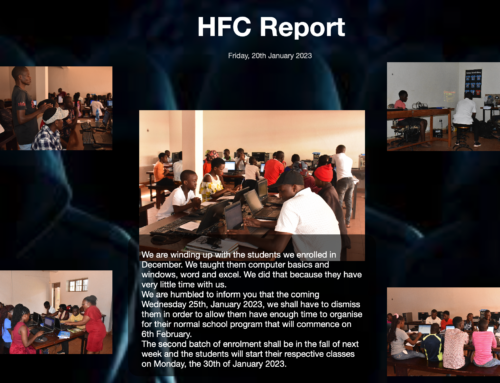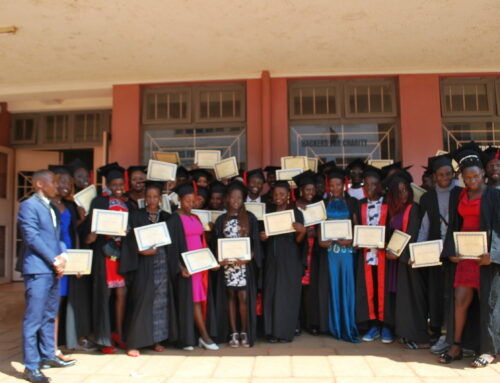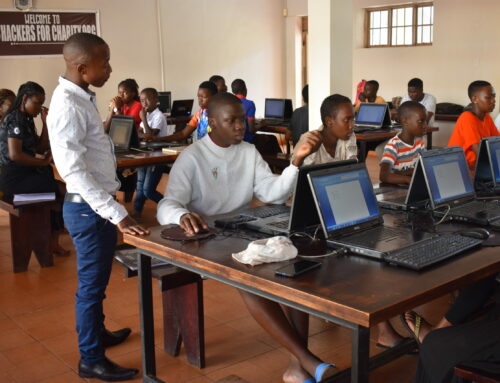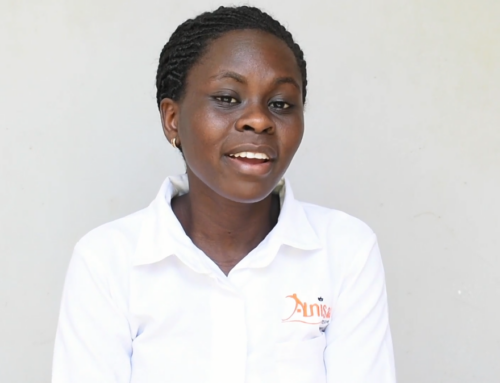We’re a group of technologists. Why are we “so into” education?
Nelson Mandela said, “Education is the most powerful weapon which [we] can use to change the world.” In our experience, this is especially true in the most desperate places on the planet. All of us at HFC are doing what we can to change the world. We could spend our energy fighting poverty, corruption and medical epidemics directly, or we can focus our energy on the root of the problem: substandard education.
By combining our tech knowledge with the skills of experienced educators, we can deliver world-class computer-based education to even the most remote areas of the planet.
Why computer-based education?
We already provide free computer training at our Jinja, Uganda Computer Training Center to develop our student’s technical skills in preparation for the coming bandwidth explosion. We want our students to be comfortable with technology as it rapidly becomes an integrated part of Ugandan culture and society. But tech training is only a part of the equation. Educators all over the world are turning to computer-based online educational resources in the classroom and the results are promising, according to the recent Babson Survey:
- 77% of academic leaders rated the learning outcomes in online education as the same or superior to face-to-face
- 69.1% of chief academic leaders that say online learning is critical to their long-term strategy.
- 6.7 Million students took at least one online course in 2013.
Too much reading?
Our passion for education led us to reach out to educators and others in the community, and for years we worked alongside WorldPossible.org, who created the RACHEL education bundle. Through the years, we worked together to create several easy-to-use, deployable solutions that could bring educational resources to anyone with a smartphone or laptop, even if they didn’t have an Internet connection. We spent years advancing rugged hardware solutions for RACHEL, and recently we’ve partnered with WorldPossible and moved our education projects there. Please visit their site for project updates, downloads and ready-built educational solutions.
How did this all start?
When I first arrived in Uganda with my family, we immediately saw the need for improved education. Our children attended a prestigious Ugandan school and we watched in horror as the teacher corrected them in several subjects (including English!) when our kids were right. We began in earnest to do what we could. We built computer classrooms in schools and opened a Computer Training Center. As our experience grew, so did our educational offerings. We’ve been a long-time supporter of RACHEL (http://www.worldpossible.org) and have distributed it all over the place, in every classroom and with every computer we’ve donated. We’ve used GCF Learn Free (http://www.gcflearnfree.org) as a core of our Computer Training Center curriculum for almost four years and have seen hundreds of students graduate, land awesome jobs and turn their lives around. But that was the extent of our “education initiative”. I mean, we’re computer folks, not educators.
Well, that’s changed. I realized the importance of this when I showed Josh Hamby our standard educational package, loaded onto a Raspberry Pi (designed by our own Sam Kinch) which I thought was cool. His response was, “Meh”. Josh liked the content, but as an educator, it didn’t really help him. He wanted more. He wanted more than awesome Khan Academy videos. He wanted exercises. He wanted a centralized tracking system to see how students in multiple schools were doing and how the teachers were doing (viewable online, even if the schools weren’t). He wanted clear reports, and.. well, it was a long list.
I wanted Josh to think the Pi was as cool as I did, but eventually I realized he was right. In order to be more than a cool gadget, we would have to step up our game to make it the right fit for our educators, and I had come to realize that education is of utmost importance. In Uganda, like in many other messed up countries, education is quite simply the key to changing the country. It’s one thing that we can do right now to have the biggest impact on the future.
What’s next?
The Raspberry Pi had it’s limitations. For starters:
- It had no power switch. When you yank power, it shuts the machine down HARD. This is bad for the operating system and over time corrupts files.
- It had power problems. It requires a constant higher voltage then the typical 500mA served by most chargers. Without this power up, wi-fi drops, the machine hangs and all sorts of problems crop up.
- It was powered by AC (wall) but not DC (car/solar). We needed both, especially in rural areas.
- It was delicate. The basic Pi in any case leaves too much exposure to the elements. Over time, dust and dirt, like what we see in typical environments in Africa would eat the system alive.
- It really, really needed a battery to account for power outages.
 Sam worked some magic and addressed all the shortcomings to develop what we call the “Pelican Pi”. We have prototypes floating around and in field tests. Eventually, we will need more, and that means we’ll need to scale up. We’ll need folks to help us build them (we’re looking at hacker spaces and conferences where attendees can learn hardware skills by assembling them), we’ll need shipping to get them where they need to be, and we’ll need plenty more field testing. We’re also looking at kickstarter and buy-one give-one programs to get them funded and alternate builds to suit purposes other than education (Zombie survival case, anyone?)
Sam worked some magic and addressed all the shortcomings to develop what we call the “Pelican Pi”. We have prototypes floating around and in field tests. Eventually, we will need more, and that means we’ll need to scale up. We’ll need folks to help us build them (we’re looking at hacker spaces and conferences where attendees can learn hardware skills by assembling them), we’ll need shipping to get them where they need to be, and we’ll need plenty more field testing. We’re also looking at kickstarter and buy-one give-one programs to get them funded and alternate builds to suit purposes other than education (Zombie survival case, anyone?)
This Pelican arrangement is perfect for do-it-yourselfers, and those with (or willing to learn) some basic hardware technical skills. However, we realize that an off-the-shelf solution is important, so we’re also fielding the BRCK.
For more information, keep an eye on our website and the Education main page. We’ll update as we progress.





